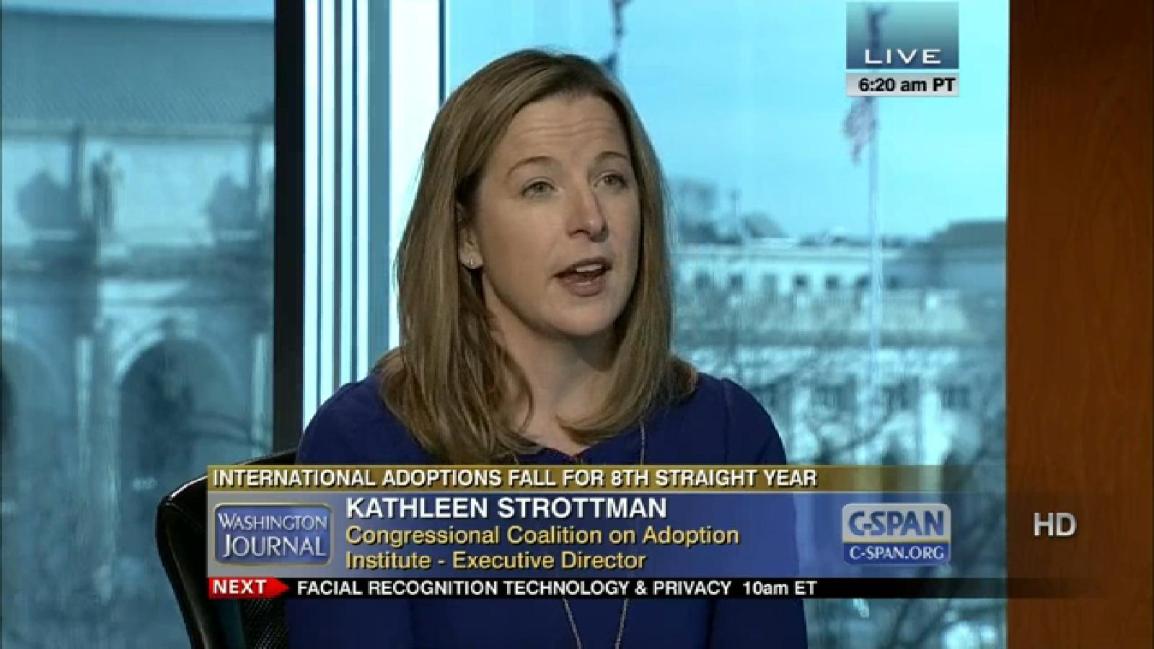Today, the Subcommittee on Human Resources of the Committee on Ways and Means held a hearing to review the success of several privately run programs to increase the number of children adopted out of foster care. This marks the beginning of the committee’s efforts to review—and hopefully reauthorize—a federal program entitled the Adoption Incentives Program. Originally created in 1997 as part of the Adoption and Safe Families Act, the Adoption Incentives Program has delivered a total of $375 million in bonuses to states that were successful in increasing the number of children adopted out of foster care.

Since the inception of the Adoption Incentives Program, more than half a million children found their forever homes. Despite this success, however, over 100,000 foster children are still waiting to be adopted. If trends continue, approximately 50% of these children will succeed in finding homes through adoption and 50% will continue to wait. Statistics reveal that those who remain waiting are most often older children, members of larger sibling groups or those children who have special physical or mental health needs. In fact, according to a the most recent AFCARS report, the average age of a child adopted out of foster care is 6, while the average age of a child waiting to be adopted out of care is 8.
So the question before Congress is this: how can the federal government incentivize states to find a home for every child? The programs highlighted in today’s committee hearing prove beyond a shadow of a doubt that there is no such thing as an unadoptable child, just an unfound family. There are at least three lessons to learn from these programs’ experiences.
- States cannot employ “a one-size-fit-all” strategy for finding a permanent home for a child. Efforts to recruit an adoptive family for a child must be as diverse as the children themselves.
- States that have succeeded in finding homes for older and special needs children have done so in close partnership with community and faith-based partners. Such partnerships allow state child welfare agencies to be more innovative in their approach; address critical workforce gaps; increase their reach into communities where perspective adoptive parents are likely to be found; and provide post- adoption support.
- Finally, success in finding an adoptive family for every child who needs one is premised on the belief that all children need and deserve a family
If Congress hopes to replicate the successes of the types of programs highlighted today it must learn from these lessons and better incorporate them into the current Adoption Incentives Program. Congress might also want to consider whether the current model of providing an individual bonus per adoption is the best way to incentivize adoption for older and special needs children. Perhaps this group would be better served by a model similar to the Department of Education’s “Race to the Top,” a federally-funded contest which provides funds to states that successfully put forward groundbreaking, thoughtful plans to address four key educational reform areas. While the full effects of “Race to the Top” remain to be seen, preliminary findings indicate that it has been successful in spurring innovation and improving in educational outcomes. A similar approach might better incentivize states to be more innovative by providing more concentrated support for their efforts to find homes for harder to place children.
Another idea might be to use the adoption bonuses as a way to incentivize certain policies and practices that have been proven effective in finding homes for children. For instance, provide rewards to states that use adoption recruiters as opposed to making finding an adoptive family one of the many tasks assigned to an overloaded caseworker. Or grant bonuses to states that severely limit the use of an alternative planned permanent living arrangement (APPLA) for older youth. Under this approach, the federal government might use the “carrot approach” to reward states that provide robust post adoption services, reduce the amount of time between termination of parental rights and the completion of adoption and engage in interstate adoptions.
We would like to thank Chairman Reichert for his leadership in dedicating the first subcommittee hearing of the 113 congress to such an important and impactful topic. We look forward to working with Members of Congress to explore these and other ways this important program might better serve its stated goal: to find families for waiting children.




